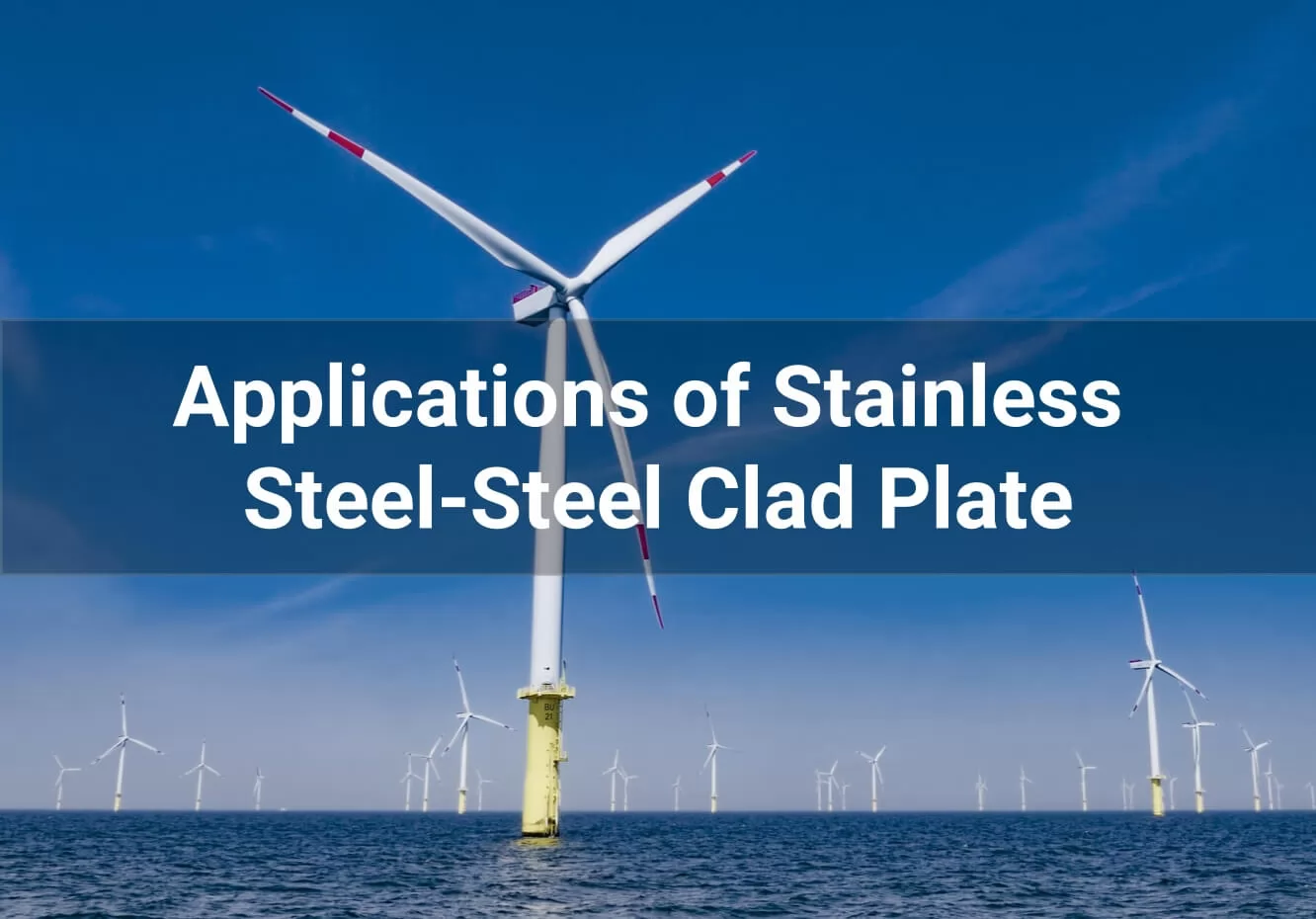


Stainless Steel-Steel Clad Plates are composite materials formed by bonding a layer of stainless steel to carbon steel through explosion or rolling processes. These plates combine the corrosion resistance of stainless steel with the strength and affordability of carbon steel. This makes them suitable for industries where resistance to aggressive environments and high mechanical strength are essential. Stainless steel-steel clad plates are widely used in industries such as petrochemical, power generation, pressure vessels, oil and gas, and wastewater treatment.
|
Cladding layer |
Available Grade |
Application |
|
TP304/304L, 316/316L,310/310S, 321,347,317/317L,410/410S, S31803, S32205, S32750, S32760, S31254 and etc. |
Petrochemical,Power Generation,Pressure Vessel,Oil and Gas,Wastewater treatment | |
|
*These are typical Grades. Please consult if your required standard/grade is out of the list. |
||
In the petrochemical industry, stainless steel’s corrosion resistance is critical, especially in environments involving strong acids, bases, or chlorides. Stainless steel-steel clad plates are used in reactors, storage tanks, heat exchangers, and distillation towers. The stainless steel outer layer protects against corrosive chemicals, while the carbon steel base provides structural strength and cost savings compared to using solid stainless steel. This combination makes stainless steel clad plates a reliable solution for processing equipment exposed to harsh chemicals and extreme temperatures.
In power generation, particularly in flue gas desulfurization (FGD) systems of coal-fired plants, stainless steel-steel clad plates play an important role in preventing corrosion. The exhaust gases, containing sulfur dioxide (SO₂) and water vapor, can condense and form highly corrosive liquids that damage equipment. Stainless steel’s superior corrosion resistance, combined with carbon steel’s mechanical strength, makes these clad plates ideal for constructing chimney liners, heat exchangers, and other components exposed to high temperatures and corrosive conditions.
Pressure vessels used in chemical, oil and gas, and other industries require materials that can withstand high pressure and corrosive substances. Stainless steel-steel clad plates are commonly used for fabricating pressure vessel walls, heads, and other critical components. The stainless steel cladding provides a protective layer that resists corrosion from aggressive media, while the carbon steel base offers the necessary strength to handle high-pressure conditions. This cost-effective solution ensures the long-term safety and reliability of pressure vessels.
The oil and gas industry frequently deals with corrosive environments, particularly in upstream and midstream operations. Stainless steel-steel clad plates are extensively used in offshore platforms, refineries, pipelines, and storage tanks where resistance to corrosion from seawater, hydrogen sulfide (H₂S), and other chemicals is essential. The stainless steel layer ensures protection against these harsh environments, while the carbon steel backing provides structural support for heavy-duty operations.
In wastewater treatment plants, equipment must endure highly corrosive environments that involve exposure to chemicals and abrasive materials. Stainless steel-steel clad plates are ideal for constructing tanks, pipes, and other components that require both corrosion resistance and structural integrity. The stainless steel surface layer protects against rust and corrosion from wastewater chemicals, while the carbon steel base offers the mechanical strength needed for long-lasting, robust performance in these demanding applications.
Stainless Steel-Steel Clad Plates have emerged as a critical material in various industries due to their unique combination of corrosion resistance and mechanical strength. By bonding stainless steel to carbon steel, these composite plates offer an ideal solution for applications exposed to harsh environments, including petrochemical processing, power generation, pressure vessels, oil and gas, and wastewater treatment.
Their ability to withstand aggressive chemicals, high temperatures, and high-pressure conditions makes them essential in equipment like reactors, storage tanks, heat exchangers, and offshore platforms. The stainless steel layer ensures long-term durability and resistance to corrosion, while the carbon steel base provides the necessary structural strength at a cost-effective price point. Stainless steel-steel clad plates are the go-to choice for industries requiring both strength and longevity in demanding environments, ensuring reliable performance, reduced maintenance costs, and enhanced safety.Contact us now, Get more information and a quote!



Fugo Tech is focused on the manufacturing of clad metal plate and distributes the Stainless Steel, Titanium, Nickel Alloy, Zirconium and other non-ferrous metal pipes, fittings, flanges, and fasteners.